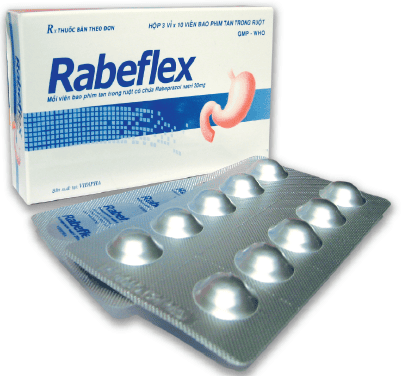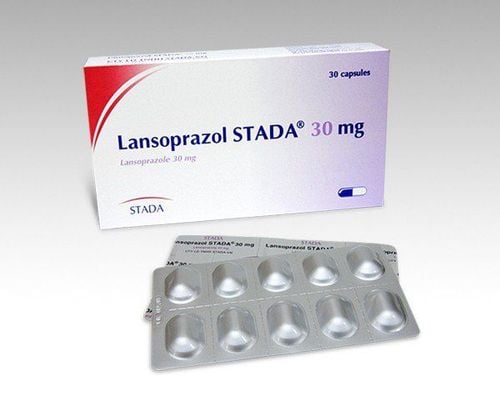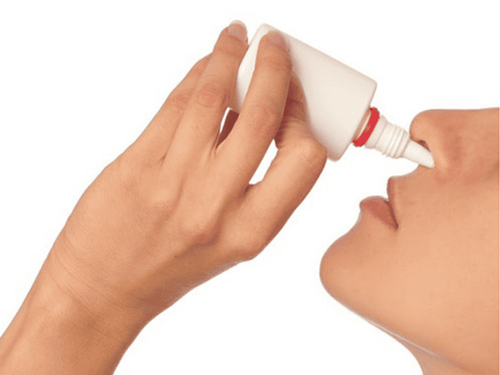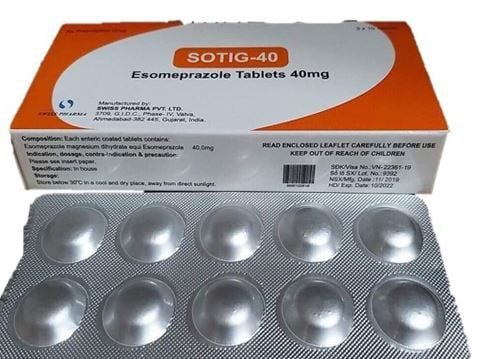This is an automatically translated article.
Foreign bodies in the ear, nose and throat are quite common and common in today's life, especially in children, the elderly and people with mental disorders. Picking up foreign bodies in the throat is an emergency measure, dealing with foreign objects in the throat. However, care must be taken when performing it to avoid other dangerous complications.1. Overview
The pharynx (pharynx) is bounded by the floor of the skull at the top and below by the cricoid cartilage, equivalent to the C6 cervical spine. The hypopharynx consists of the larynx, the opening of the upper part of the trachea, and the oropharynx. Throat removal is an ENT emergency that must be maintained to protect the airway.Because the ear, nose, and throat parts have a structure consisting of many slots, grooves and pits, foreign objects are easy to fall in. Therefore, foreign bodies in the throat are also the most common cases in cases of ENT foreign bodies.
Foreign body in the throat is not only found in children but also occurs in adults. If this situation is encountered, it is necessary to handle it promptly and urgently, to avoid encountering unpredictable complications such as: Obstruction of the airways, apnea, laryngeal edema, pushing the foreign body down the glottis into the food. trachea and trachea, abscesses of the pharynx and pharynx, ... even lead to death.
There are many causes of foreign bodies in the throat. But the most common is due to food falling in and getting caught, usually food with bones, shrimp shells, crabs, plastic items,...
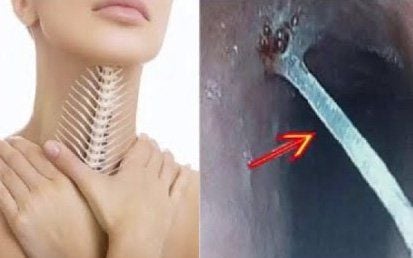
Dị vật trong họng mắc phải do thức ăn có xương
2. Symptoms when encountering a foreign body in the throat
The most common symptom when encountering a foreign body in the throat is that a child is eating, drinking or playing when suddenly coughing, wheezing, watery eyes, red face. In addition, the child also has severe shortness of breath, purple face and lips, and may stop breathing. Worse still is unconsciousness or bedwetting.These foreign bodies often cause airway obstruction in children. Patients with non-obstructive or incomplete airway obstruction with a foreign body in the pharynx usually have a history of choking, painful swallowing, dysphagia, or difficulty speaking. A foreign body in the throat should also be suspected in those with unexplained cough, stridor, or hoarseness.
For children with signs such as stridor, partial airway obstruction, it is necessary to ask parents if the child has ever choked or aspirated. In these cases, it is often difficult to diagnose the cause of a foreign body in the lower pharynx. Because these symptoms appear more slowly, it will obscure the initial signs of foreign body.
There are many cases of foreign bodies in the pharynx - hypopharynx were misdiagnosed and treated as cases of laryngeal diphtheria. Therefore, the treating physician should be vigilant in patients with unexplained upper respiratory tract signs. Especially in children with a history of choking.
3. Pick up foreign body in throat
Most of the foreign bodies in the throat are plastic pieces, metal pins, melon seeds, fish bones, pork bones, chicken bones, coins, dentures... X-rays will help identify position and size of coins, batteries, and other contrast media, but most laryngeal foreign bodies such as fishbones are non-contrast. Therefore, the surgical intervention to remove the foreign body in the pharynx should be based on the medical history and physical examination to determine whether there is a foreign body.After determining the need for surgical intervention to remove the foreign body in the throat, the doctor will carefully check the patient for basic tests, history of allergies or other diseases, take X-rays if yes. When the preparation is complete, the doctor will conduct the procedure to remove the foreign body in the throat as follows:
Endotracheal anesthesia or anesthesia, pre-anesthesia. About the patient's position: Put a pillow under the shoulder, let the patient sit in the endoscopic examination position or lie on his back (if directly using a laryngoscope or esophagooscope). Regarding the intervention technique: Detecting foreign bodies in the throat with Frankael pliers:
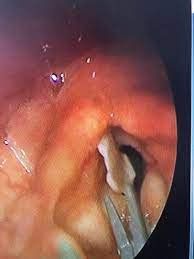
Sử dụng kìm Frankael để gắp dị vật trong họng
Please dial HOTLINE for more information or register for an appointment HERE. Download MyVinmec app to make appointments faster and to manage your bookings easily.




